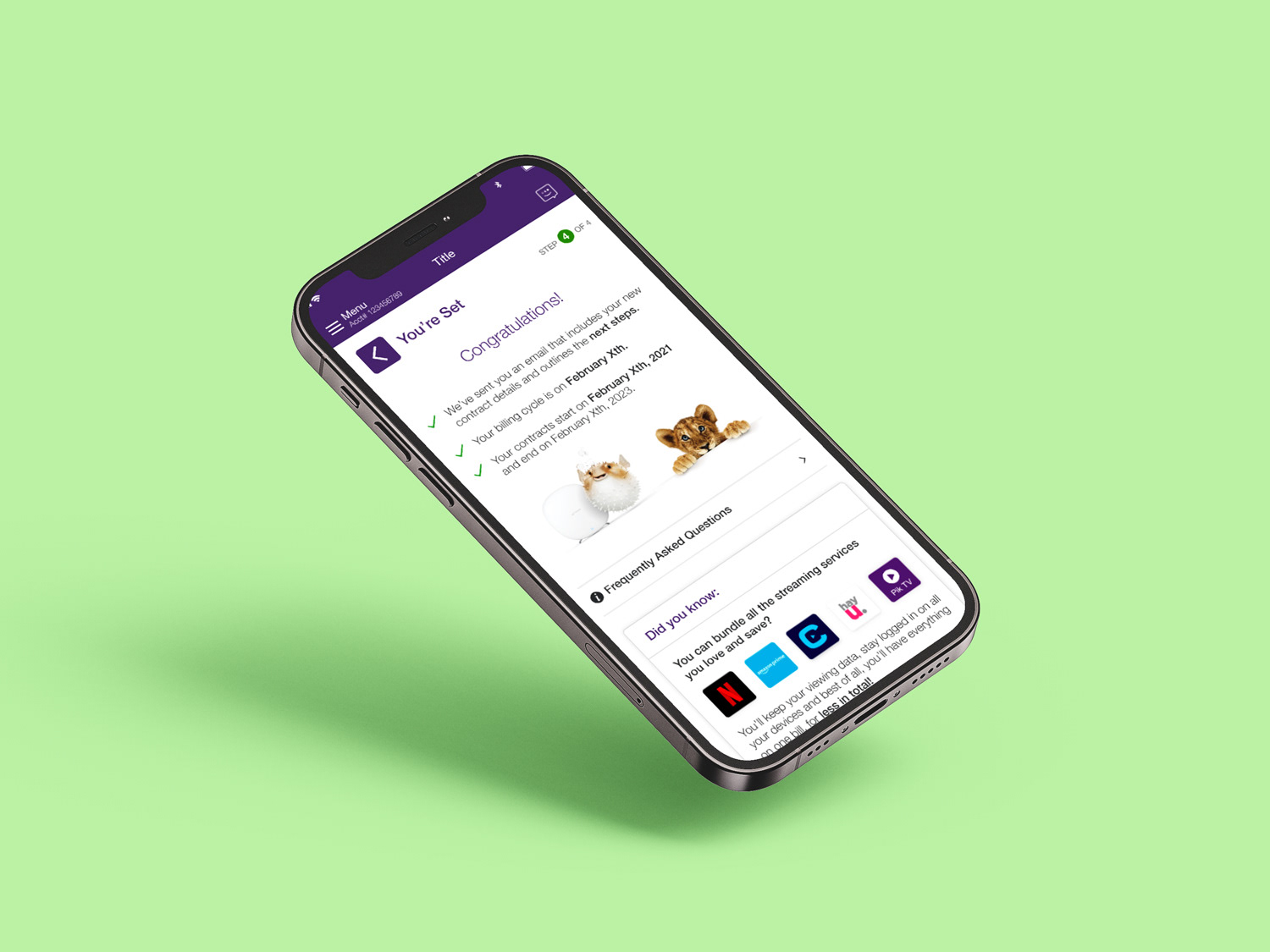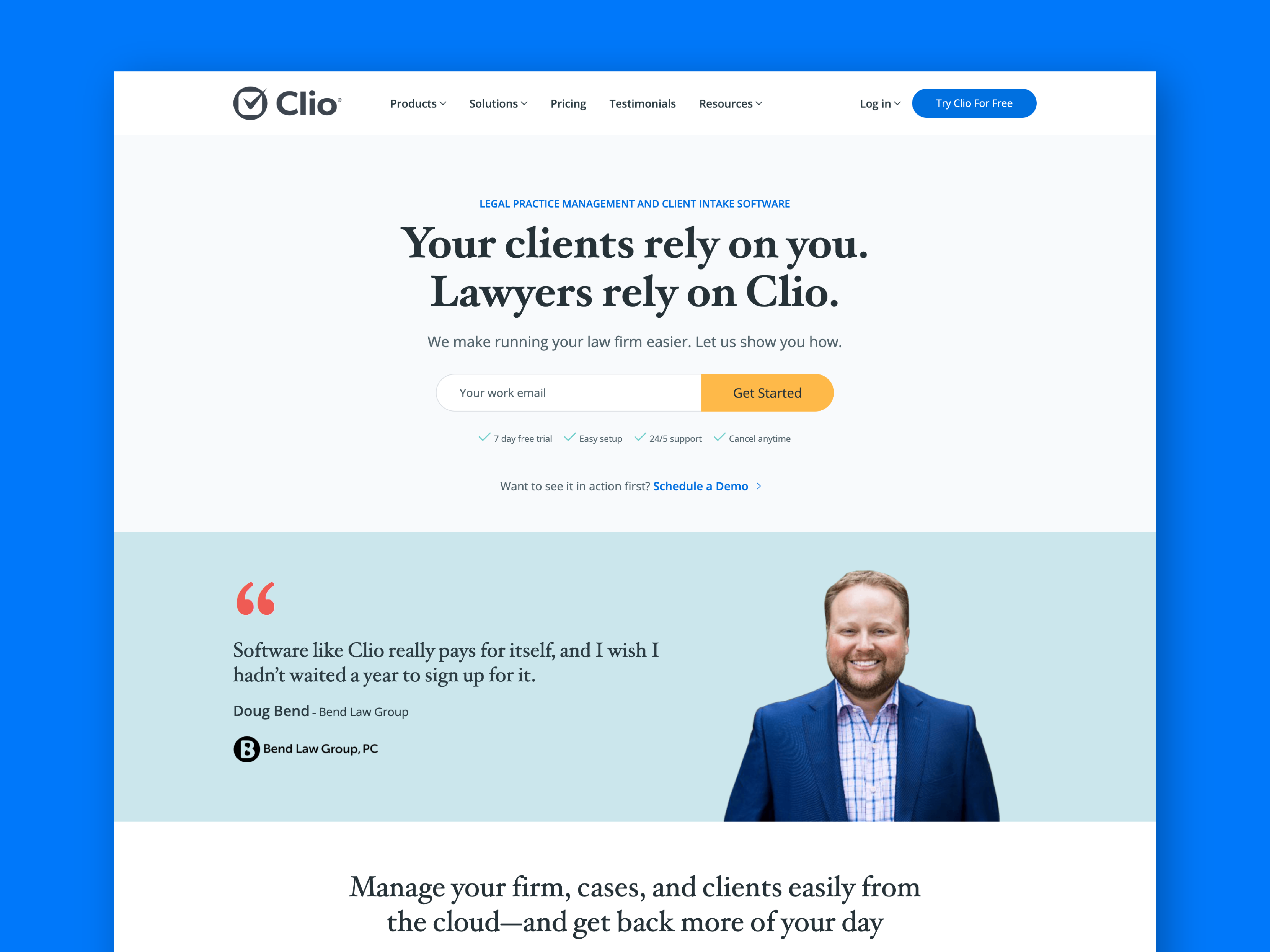Role
Lead Designer
Industry
LegalTech
Background
Clio, the leading legal practice management software provider in North America, annually harnesses data from tens of thousands of legal professionals across the US to create the Legal Trends Report. This report offers a unique glimpse into law firm efficiencies, hourly rate comparisons, key metrics, success recommendations, and insights into pressing issues within the legal industry.
For Clio, the report plays a pivotal role as both a vital marketing asset and a powerful lead generation tool. Prior to 2019, the report's format remained consistent, being offered as a downloadable PDF on the Clio website with little variation from year to year. However, my initial research uncovered a significant limitation – a lack of comprehensive data from previous campaigns that could inform and drive ongoing improvements. To bridge this gap, I successfully advocated for additional resources and proposed the creation of a dedicated microsite alongside the traditional PDF report, enhancing the report's reach and impact.
The Challenge
The challenge stemmed from presenting the Legal Trends Report in a static PDF format, which limited the ability to gather comprehensive data on reader engagement.
Tracking user interactions, such as which sections were most read or skipped, and how long readers spent on each page, was virtually impossible. This lack of data hindered the Clio team's capacity to make informed decisions on how to enhance and iterate on the report from year to year.
Furthermore, the static nature of the PDF constrained interactivity and engagement potential, preventing dynamic content, interactive elements, and user-friendly navigation that could have improved the reader experience and comprehension of the report's valuable insights. Overall, the challenge revolved around transitioning from the PDF format to a more dynamic and interactive medium to enable data collection, enhance the report's effectiveness as a marketing tool, and address the limitations of static content.
Tasks
Information Design
Data Visualisation
Brand Design
UX Design
UI Design
Wire-framing
User Research
A/B Testing
Data Visualisation
Brand Design
UX Design
UI Design
Wire-framing
User Research
A/B Testing
Goals
Streamline data collection processes to ensure the acquisition of comprehensive and actionable insights.
Establish a robust and adaptable framework for internal use, enabling data-driven decision-making and future report enhancements.
Strategically drive lead generation through engaging and informative content marketing initiatives, attracting a wider audience.
Elevate Clio's perceived value within the legal industry by providing invaluable insights and thought leadership.
Enhance the brand's credibility and trustworthiness by consistently delivering authoritative and data-backed industry reports.
The Opportunity
How might we transform the 2019 Legal Trends Report into an engaging and interactive online experience for readers while effectively collecting pertinent data to ensure the report's sustained success in the coming years, thereby elevating its usability and impact?
Guiding Principles
Enhance User Engagement and Interactivity
Promote user engagement by offering interactive elements within the report, enabling readers to tailor their experience to their preferences.
Promote user engagement by offering interactive elements within the report, enabling readers to tailor their experience to their preferences.
Enhance Transparency
Provide users with intuitive navigation tools, ensuring a transparent and user-friendly experience.
Provide users with intuitive navigation tools, ensuring a transparent and user-friendly experience.
Data-Driven Insights
Collect valuable user data to inform data-based decision-making for continuous report improvements.
Collect valuable user data to inform data-based decision-making for continuous report improvements.
Establish an Efficient Framework
Design the report in a manner that establishes an efficient framework, saving time and effort for future iterations.
Design the report in a manner that establishes an efficient framework, saving time and effort for future iterations.
The Process
Stakeholder Interviews
I worked to establish the 'why' behind the previous design the report format, and we came together as a team to align on the new direction. We determined where the holes were in our knowledge, and how could we avoid the unknown, going forward.
I worked to establish the 'why' behind the previous design the report format, and we came together as a team to align on the new direction. We determined where the holes were in our knowledge, and how could we avoid the unknown, going forward.
Research
Delving into researching other successful online experiences, I wanted to establish a picture of what success looked like to Clio, and how could we achieve that now, and continue to do so in future years.
Delving into researching other successful online experiences, I wanted to establish a picture of what success looked like to Clio, and how could we achieve that now, and continue to do so in future years.
Brand Development
I produced three variations for the brand design, focusing in on different aspects of the content to inform my choices. The overwhelming response from the team was in favour of the direction that focused in on the idea that our readers were on a journey to change their practice from good to great.
I produced three variations for the brand design, focusing in on different aspects of the content to inform my choices. The overwhelming response from the team was in favour of the direction that focused in on the idea that our readers were on a journey to change their practice from good to great.
Testing & Iterating
After gaining a collection of fascinating customer insights, we pivoted slightly, realising the value that many customers still placed in being able to print the report.
After gaining a collection of fascinating customer insights, we pivoted slightly, realising the value that many customers still placed in being able to print the report.
Observation
Once the report was live, the wider team was able to collect user engagement data for the very first time. This opened up new informed ways for us to approach the initiative in the coming years.
Once the report was live, the wider team was able to collect user engagement data for the very first time. This opened up new informed ways for us to approach the initiative in the coming years.
User Insight
Legal practitioners, known for their time constraints, demanded a report that granted them significant control over their reading experience, ensuring their engagement. Due to this, we realised the importance of providing users with constant awareness of their location within the report.
To address this, we implemented a feature that allowed readers to effortlessly navigate between report sections, granting them the flexibility to access specific content efficiently. Additionally, we recognised the value of a clickable table of contents positioned on the left-hand side of the page, serving as a pivotal tool in enhancing user interaction and retention throughout their reading journey.
User Insight
In the landscape of the legal industry, we saw an interesting duality emerge. While a growing segment of legal professionals embraced digital reading experiences, a substantial market segment continued to express a strong preference for a printable version of the report.
Historically, generating the PDF version had been a labor-intensive endeavor. In the course of testing the 2019 online report with select customers, we discovered that a significant number still valued the option to download and potentially print the online report.
To bridge the divide between the old and the new, we aimed to streamline the production of the report in PDF format, making it more efficient internally. We recognised the importance of accommodating this user group's needs while also embracing digital advancements. Therefore , we made the PDF version available as an option, with a gradual plan to phase it out over the ensuing years as the transition to digital reading continued to evolve within the legal community.
Results
Significant Surge in Report Engagement: Our strategic enhancements led to a remarkable increase in both report views and downloads, amplifying the reach and impact of the Legal Trends Report.
Enhanced Lead Generation: The revamped report, with its user-friendly online experience, bolstered our lead generation efforts, drawing in a more extensive and engaged audience.
Data-Driven Iteration: Our newly integrated data collection mechanisms empowered us to gather valuable insights, fuelling future improvements in both content and design. This data-driven approach ensured that each iteration of the Legal Trends Report was more refined and resonant with our audience.
Simplified Framework for Future Reports: With the successful implementation of the new framework, subsequent editions of the Legal Trends Report were designed more efficiently. This streamlined process not only saved time but also enabled us to maintain a consistent and user-centric approach in all future reports.
To comply with my contractual obligations, I am unable to disclose all project details. For access to the complete case study, kindly reach out via email at renee.devalle@gmail.com


